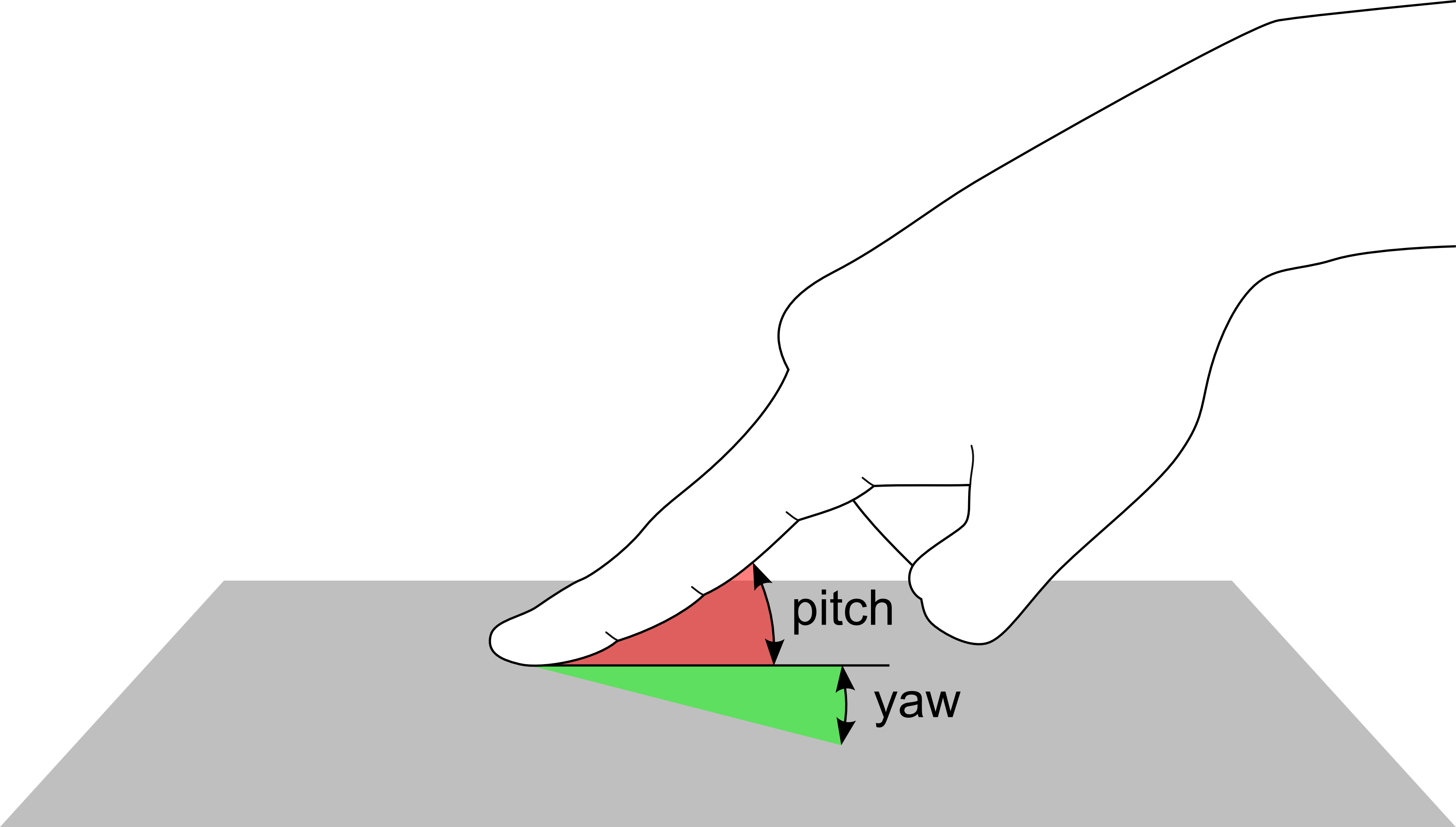At MobileHCI this year in Vienna I presented work which was conducted in cooperation with my Master student Perihan Gad from the German University in Cairo. A number of research projects had investigated possibles ways to enlarge the input vector for touchscreens. One viable option is to use the finger orientation as additional input dimensions. In our case, we investigated pitch and yaw as two additional dimensions. In our study, we investigated the ergonomic constraints while performing different pitch and yaw orientations. Therefore we systematically varied the full pitch and yaw range and asked participants how feasible it was to perform the finger orientation. We varied the input orientations using 4 different pitch and 16 different yaw angles. All combinations were performed with the index finger of the left and the right hand.
We show that the input space for each hand can be divided into two zones; the comfort and non-comfort zones. Only 135° out of 360° of all yaw orientations are within the comfort zone and perceived as feasible. Based on our results we contribute six design considerations

Comments